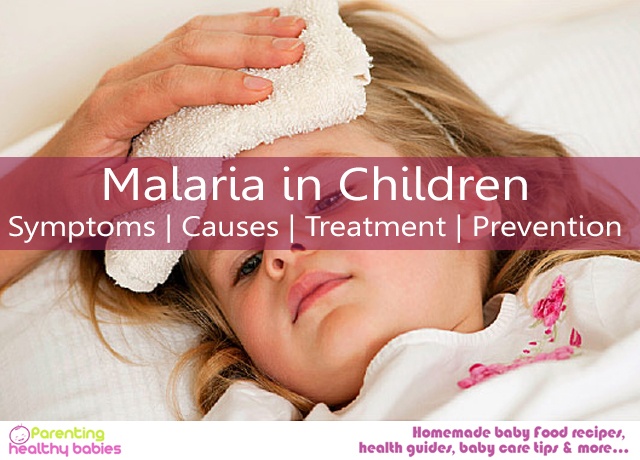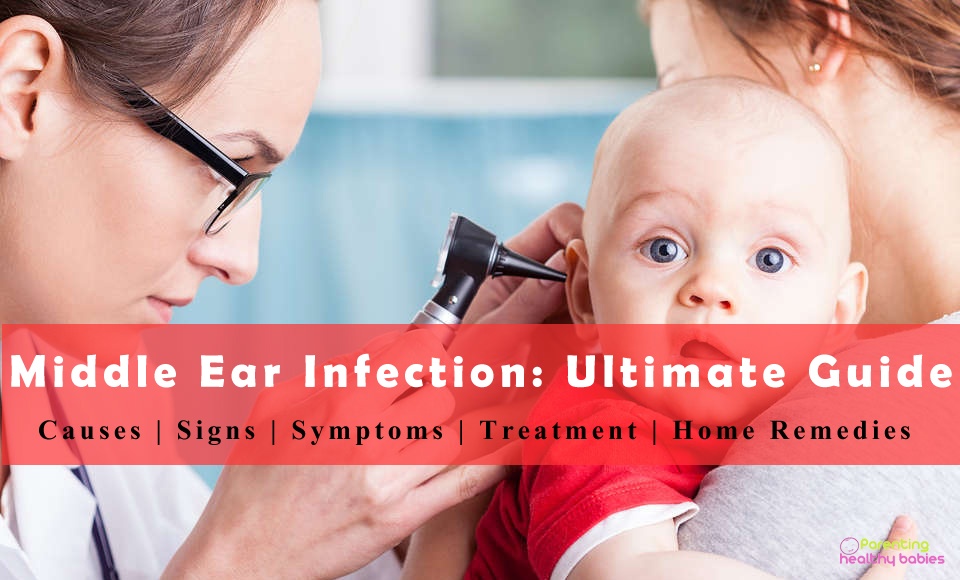Malaria is one of the most dreaded ailments plaguing the tropical countries of the world. More than 300 million people are affected from malaria annually globally. Among them, large numbers are children. Children below 5 years of age are highly prone to malarial complications and deaths. Along with affecting the tropical countries, malaria has seen to affect temperate countries as well. The disease can become severe when it is not treated at the right time. In fact, it can become life-threatening and fatal in the worst conditions. However, with proper diagnosis and treatment at the right time, malaria can be cured completely in children as well as in adults.
Cause of Malaria in Children
Malaria in children is common in the African and Asian continent along with some countries in South and Central America and in the Middle East. This is because of the prevalence of mosquitoes in the areas. You might not know, but malaria can be caused from a single mosquito bite. Malaria is a mosquito-borne ailment, which spreads from one person to another through mosquito bites only and not from other sources. The parasite responsible for causing malaria is known as the Anopheles mosquito and it carries the Plasmodium parasite. These mosquitoes are highly active during the night time. The mosquitos pick up the parasite when they bite someone who already has malaria. When the same mosquito bites another person, it successfully transmits the malarial germ into the other person. Malaria is not transferred to another person by mere touching, sharing things or even via physical contact. In very rare cases, malaria is transferred from one person to another. For instance, through organ donation, blood transfusion, shared needles or even from mother to the child ‘congenital malaria’.
Signs and symptoms of malaria in children
Malaria in children comes with very prominent signs and symptoms. In fact the disease has many early symptoms, which are often ignored. But these are clear indications of malaria. Some of the symptoms are drowsiness, irritability, trouble sleeping along with poor appetite. If your child has such symptoms, do not ignore them.
The symptoms which follow these include high fever with chills and extremely fast breathing. The fever is seen to rise gradually in the coming 1-2 days. There are cases when the fever is seen to rise to very high levels (almost to 105◦F). Before the fever rises, there are spells of severe chills and shivering. However, when the fever goes down, there is intense sweating and the kid might feel completely drained out and fatigued. This pattern of symptoms might keep on continuing for 3-4 days in the form of chills followed by high fever and then intense sweating. Depending on the kind of malarial parasite, which has hit the child, the symptoms might vary to some extent.
Along with these symptoms, other common symptoms which are commonly seen in children suffering from malaria include nausea, headache, pains and aches all over the body, particularly in the abdomen or in the back area. The spleen of the kid is also abnormally enlarged. In case, the malarial parasite affects the brain, loss of consciousness and seizures can also be experienced. In many cases, severe malaria can harm the kidneys as well.
Diagnosing malaria in kids
When you take your child to the doctor with the symptoms mentioned above, the doctor will first carry out a complete and thorough physical examination of the child. He will question the parent of the kid regarding the temperature that has been recorded, whether there were chills and shivering and heavy sweating later. He might also want to know the area where the child lives. For confirmation of the disease, blood tests are recommended for detection of the malarial parasite. These parasites are often located inside the infected red blood cells, when the blood sample is seen under the microscope. Apart from blood tests, no other kinds of tests are needed for diagnosing malaria.
Treatment of malaria in kids
Once your child is diagnosed with malaria, the doctor can begin the treatment immediately. With timely medical treatment, malaria can be cured completely. Some of the common medicines, which are generally prescribed for malaria treatment include:
- Hydroxychloroquine
- Chloroquine
- Quinine Sulfate
- Combination of Proguanil and Atovaquone
- Mefloquine
Depending on the kind and the severity of malaria, the doctor will recommend medicines as per the child’s need. Along with these medicines, there are some ways in which you can help your own child in beating the disease in great manner. Mentioned below are some of the ways in which this can be done:
- Pay attention to diet – When your child is sick and ill, he will not eat properly. It is obvious that when the little one is fighting a disease like malaria, he will be extremely weak and feeble. Therefore it is important that the little one has the right kind of diet at this time. Healthy and light food is recommended so that the body gets the required nutrition and digestion is easy and light as well. Try feeding the child at regular intervals.
- The child must get as much rest as possible–Until and unless a child is really sick, it is difficult to keep him confined to a room. But once diagnosed with malaria, it is important that the child gets as much rest as possible. Severe fatigue and weakness is common in malaria and sometimes, the child cannot even move. Taking more rest will only help the kid in recuperating faster from the ailment. Some ways of keeping the child at rest is by reading from books, playing board games on the bed, telling stories and so on.
- Try keeping the fever under control–The bouts of fever that are common in malaria, make the child extremely weak. Therefore it is always recommended to keep the body temperature under control. This reduces lots of stress for the kid as well – both physical and psychological. Paracetamol is the safest fever-reducing medication, which can be given to the child. Ask the doctor about the dosages that should be given. Along with this, frequent sponging with cold water also helps in bringing down high fever.
With the right kind of treatment offered, malaria can be cured within a short span of time. However, for severe symptoms and complications, hospitalization might be required.
How can malaria be prevented in children?
It is said that prevention is better than cure. Though treatment of malaria for children as well as for adults is now available and the disease can be cured when diagnosed at the right time, it is always better to take preventive measures so that the disease does not take place at the first place itself. Basically one job needs to be done for this and it is to keep mosquitoes at bay as much as possible. Mentioned below are some ways of preventing malaria in children:
- Try keeping the surroundings of your home and other areas mosquito free
Go around and explore the surroundings of your house thoroughly. Do you find specific places which could be ideal breeding ground for mosquitoes? Are there empty bottles, broken flower pots, crumbled old utensils or plastic bags strewn here and there? Water tends to get collected in these items and can become great breeding grounds for malaria mosquitoes. Get rid of these items as quickly as possible and try keeping the surroundings of the house clean and proper.
-
Using mosquito nets at night during sleeping
If your area is mosquito prone, it is recommended to use mosquito nets at night during sleeping. This is important because the malarial parasites are more active during the night time only. When one is asleep, one cannot understand if he/she is bitten by mosquito. The mosquito might transfer the ailment at that time.
-
Proper dress for the child
Mosquitoes tend to get attracted to dark colors. Therefore it is recommended to make the child wear light colored dresses so that mosquitoes remain at bay. Also mosquitoes can bite on any exposed area in the body. Make your child wear full-sleeve dress and full-length pants so that the hands and the legs are completely covered.
-
Use mosquito meshes
There are many areas which are highly mosquito prone. You might try various means but these pesky insects just refuse to go. In such places, the only available solution is using mosquito meshes on doors and windows. Cover the whole areas with the meshes so that the parasites do not get any chance to enter the house from anywhere.
-
Mosquito repellants
If you search in the market, you will get innumerable varieties of mosquito repellants. While some are available in the form of coils, some come in liquidator form and some are available in creams and roll on forms. Use the kind of repellant which seems most suitable for your use.
There is no need to panic even if a child is diagnosed with malaria. Just ensure that proper care is taken and treatment is offered at the right time. The disease is completely curable.












